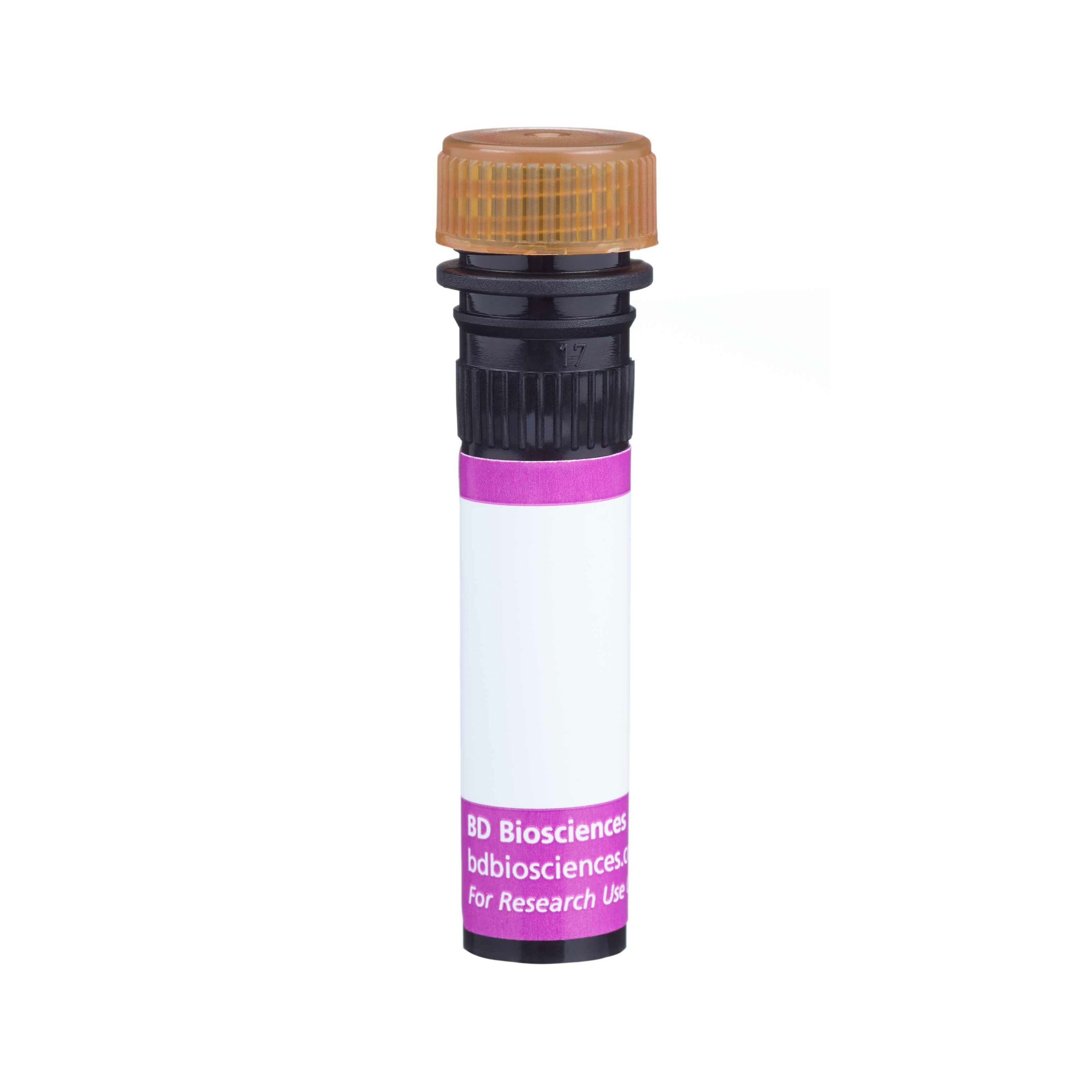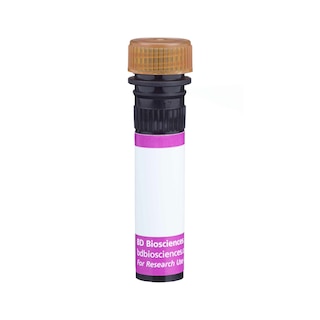Old Browser
Looks like you're visiting us from {countryName}.
Would you like to stay on the current country site or be switched to your country?


Regulatory Status Legend
Any use of products other than the permitted use without the express written authorization of Becton, Dickinson and Company is strictly prohibited.
Preparation And Storage
Recommended Assay Procedures
For optimal and reproducible results, BD Horizon Brilliant Stain Buffer should be used anytime two or more BD Horizon Brilliant dyes (including BD OptiBuild Brilliant reagents) are used in the same experiment. Fluorescent dye interactions may cause staining artifacts which may affect data interpretation. The BD Horizon Brilliant Stain Buffer was designed to minimize these interactions. More information can be found in the Technical Data Sheet of the BD Horizon Brilliant Stain Buffer (Cat. No. 563794).
Product Notices
- This antibody was developed for use in flow cytometry.
- The production process underwent stringent testing and validation to assure that it generates a high-quality conjugate with consistent performance and specific binding activity. However, verification testing has not been performed on all conjugate lots.
- Researchers should determine the optimal concentration of this reagent for their individual applications.
- An isotype control should be used at the same concentration as the antibody of interest.
- Caution: Sodium azide yields highly toxic hydrazoic acid under acidic conditions. Dilute azide compounds in running water before discarding to avoid accumulation of potentially explosive deposits in plumbing.
- For fluorochrome spectra and suitable instrument settings, please refer to our Multicolor Flow Cytometry web page at www.bdbiosciences.com/colors.
- Please refer to www.bdbiosciences.com/us/s/resources for technical protocols.
- BD Horizon Brilliant Stain Buffer is covered by one or more of the following US patents: 8,110,673; 8,158,444; 8,575,303; 8,354,239.
- BD Horizon Brilliant Violet 786 is covered by one or more of the following US patents: 8,110,673; 8,158,444; 8,227,187; 8,455,613; 8,575,303; 8,354,239.
- Cy is a trademark of GE Healthcare.
Companion Products






The 9A1.5 monoclonal antibody specifically binds to an extracellular domain of Delta-Like Protein 4 that is encoded by the Dll4 gene. Delta-Like Protein 4 is a type 1 transmembrane glycoprotein that is also known as Delta-like 4, Delta-like Ligand 4, Delta4 and DL4. It is a member of the Delta/Serrate/Jagged Family of Notch ligands. Notch ligands are classified by the presence of specific structural motifs including an N-terminal Delta-Serrate-LAG-2 (DSL) domain necessary for Notch binding, EGF repeats, and the DOS domain (a specialized EGF repeat). The Notch family of transmembrane receptors and their ligands control cell-fate "decisions" during the development of many organs in a wide variety of animal species. Delta-Like Protein 4 activates cellular signaling pathways by binding to Notch1 and Notch4 receptors. It is involved in embryonic vascular development and tumor angiogenesis, and is induced by vascular endothelial growth factor (VEGF)-A and hypoxia. Delta-Like Protein 4 and Notch receptor signaling are also intimately involved in the regulation of innate and adaptive immunity. Delta-Like Protein 4 is highly expressed by cortical thymic epithelial cells (TEC). Interaction between Delta-Like Protein 4-positive TEC and Notch1 expressed by T cell precursors drives T cell lineage commitment, expansion and maturation within the thymus. Delta-Like Protein 4 is also expressed by dendritic cells and plays a role in peripheral T helper cell differentiation. Blocking of Delta-Like Protein 4 and Notch receptor interactions serves to diminish autoimmune diseases in mouse model systems.
The antibody was conjugated to BD Horizon™ BV786 which is part of the BD Horizon Brilliant™ Violet family of dyes. This dye is a tandem fluorochrome of BD Horizon BV421 with an Ex Max of 405-nm and an acceptor dye with an Em Max at 786-nm. BD Horizon BV786 can be excited by the violet laser and detected in a filter used to detect Cy™7-like dyes (eg, 780/60-nm filter).

Development References (4)
-
Fiorini E, Ferrero I, Merck E, et al. Cutting edge: thymic crosstalk regulates delta-like 4 expression on cortical epithelial cells. J Immunol. 2008; 181(12):8199-8203. View Reference
-
Koch U, Fiorini E, Benedito R, et al. Delta-like 4 is the essential, nonredundant ligand for Notch1 during thymic T cell lineage commitment. J Exp Med. 2008; 205(11):2515-2523. View Reference
-
Shutter JR, Scully S, Fan W, et al. Dll4, a novel Notch ligand expressed in arterial endothelium. Genes Dev. 2000; 14:1313-1318. View Reference
-
Shutter JR, Scully S, Fan W, et al. Molecular cloning of delta-4, a new mouse and human Notch ligand. J Biochem (Tokyo). 2001; 129(1):27-34. View Reference
Please refer to Support Documents for Quality Certificates
Global - Refer to manufacturer's instructions for use and related User Manuals and Technical data sheets before using this products as described
Comparisons, where applicable, are made against older BD Technology, manual methods or are general performance claims. Comparisons are not made against non-BD technologies, unless otherwise noted.
For Research Use Only. Not for use in diagnostic or therapeutic procedures.
Refer to manufacturer's instructions for use and related User Manuals and Technical Data Sheets before using this product as described.
Comparisons, where applicable, are made against older BD technology, manual methods or are general performance claims. Comparisons are not made against non-BD technologies, unless otherwise noted.
Report a Site Issue
This form is intended to help us improve our website experience. For other support, please visit our Contact Us page.